There are many animals with hands that you may not know about. Even animals that don’t have opposable thumbs as we do use their front paws much like hands to manipulate objects.
Animals with opposable or pseudo-opposable thumbs
Chimpanzees and Bonobos
Chimpanzees and other apes don’t have hands exactly like ours. Their thumbs are set farther back on their hands, so the fingers and thumbs don’t meet, just like humans. They use those thumbs a lot and pick things up with their fingers. They also can use their feet much like hands, enabling them to climb trees more securely.

The definition of “human” used to include the use of tool making. However, this idea was shattered when Dr. Jane Goodall studied a group of chimpanzees in the wild for many years and found them using plant parts and even modifying those leaves and stems to make tools. They partially chewed handfuls of leaves to make sponges soak up water from small puddles.
They also chewed long stems to enable them to use them to poke into holes in termite and ant mounds. When they pulled out the stems, ants were hanging onto them, enabling the chimps to eat them.
Bonobos look much like chimpanzees but are built to be more slender and tend to have their hair part down the middle of their heads. They also have several other differences, including their voices, calls, and group behavior.
Gorillas
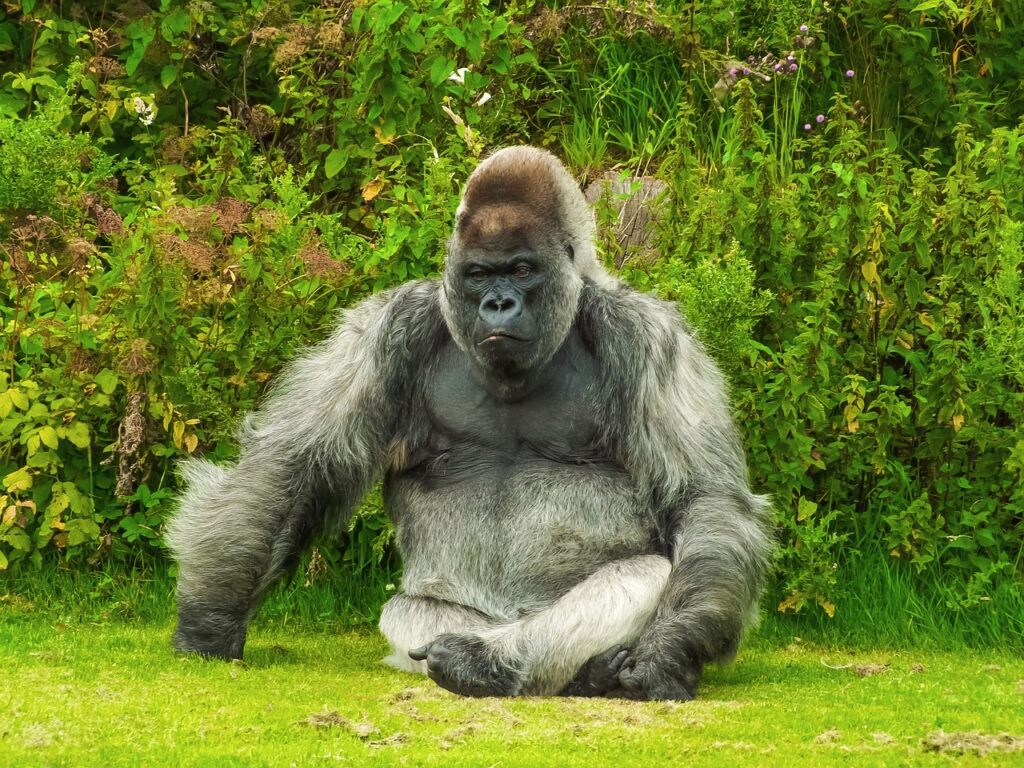
Gorillas have the same sort of hand structure as the chimps. Unlike chimps and other apes, they also don’t use their mouths to manipulate objects, preferring to use only their hands. They can use their thumbs to execute fine movements, much like humans. They rarely make or use tools, as they usually have plenty of food at their disposal where they live.
However, they can make tools when they want, such as breaking off rocks to use as scrapers to get the bark off tree branches when they want to eat the tender middle.
Orangutans
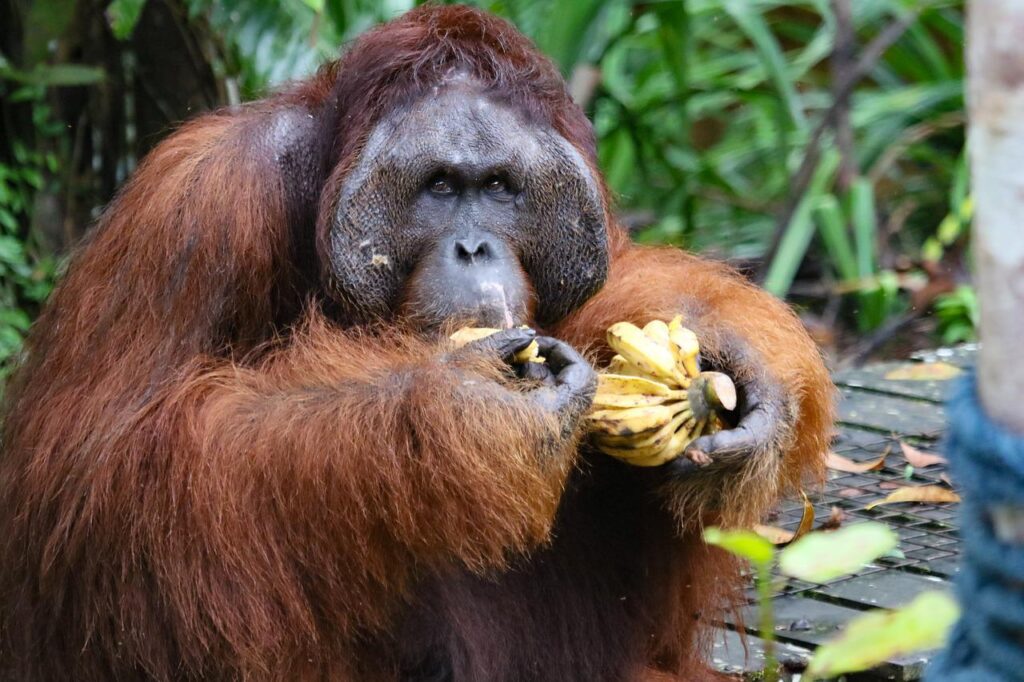
These are the large acrobats of the rainforest and certainly use their hands much of the time to aid in climbing and picking food from high up in the trees.
Their babies use their hands to hang onto the mother’s fur, keeping her hands free for climbing and food gathering rather than holding onto the babies. Like other apes, they are adept at using their hands to build large nests of branches and leaves for sleeping at night. Orangutan thumbs are so nimble that they can use their hands or feet to hold and manipulate food.
Gibbons
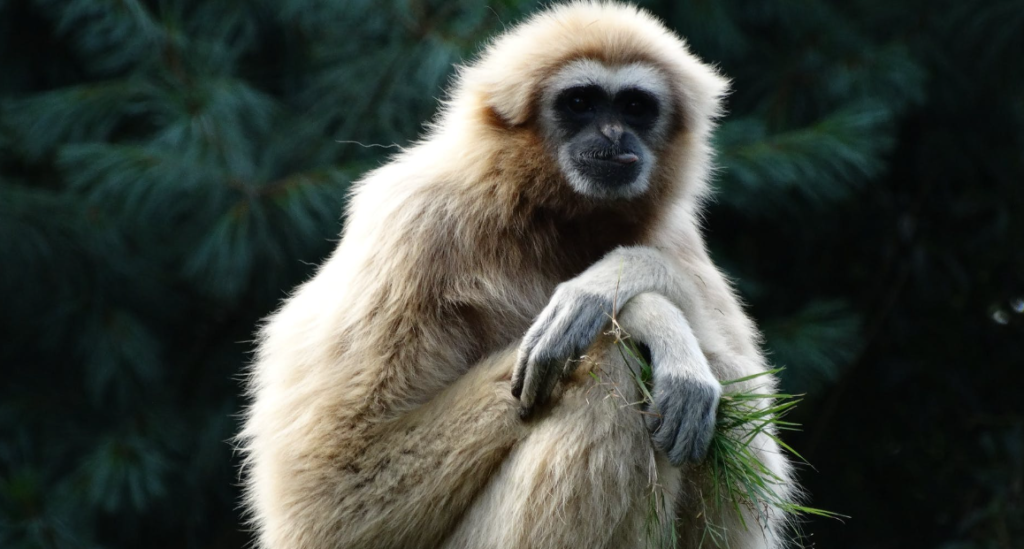
This is a smaller, lesser-known ape, but they put on spectacular displays of swinging from tree to tree, quickly covering large distances. They certainly couldn’t do this if they didn’t have the help of thumbs on their hands and feet. They are also better at walking on just two feet than any monkey or other ape.
Old World Monkeys

These are monkey species that live in Africa and Asia. Many of the 23 species in the group have opposable thumbs, most notably baboons and macaques. Some, however, do not. The colobus monkey doesn’t have any thumbs at all.
New World Monkeys

These monkeys live on the American continent, mostly in South and Central America.
They include woolly, night, capuchin, squirrel, owl, saki, ukari, and tamarins. These monkeys have pseudo-opposable thumbs like lemurs. The few exceptions are the spider and wooly spider monkeys, which have a reduced thumb or none.
Lemurs
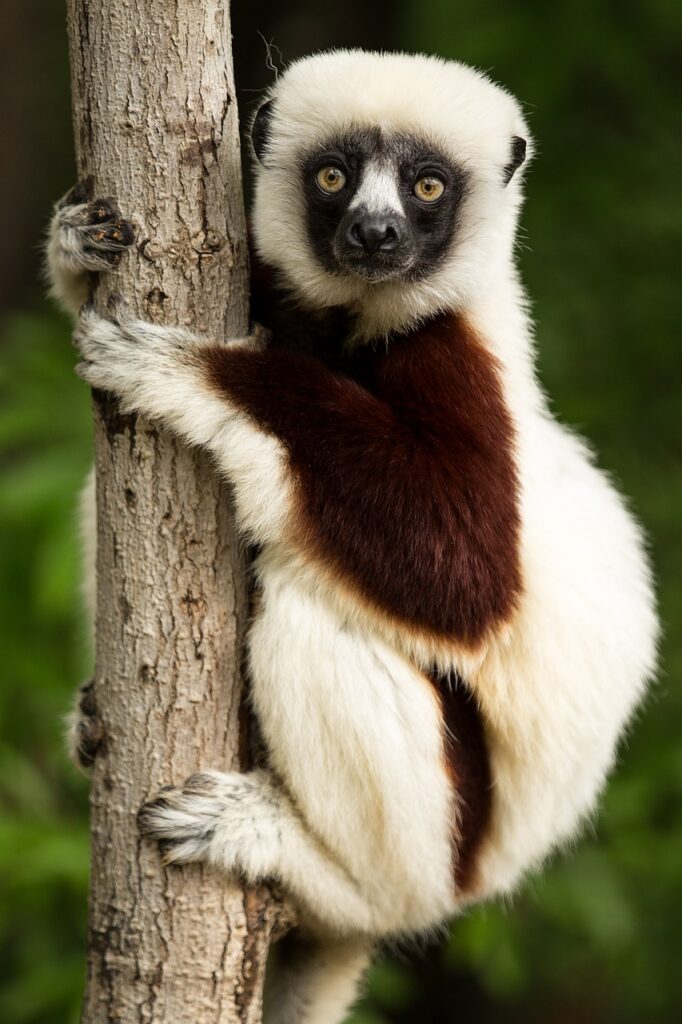
These are primates and so are related to apes and monkeys. They have thumbs but are only partly opposable, meaning they don’t work as our thumbs do. They use them, as they spend much of their lives in trees, looking for fruits and flowers, but you won’t find them doing fine work such as making small tools.
Slow Lorises

These are large-eyed nocturnal primates that live in southern and southeastern Asia. They have opposable thumbs on all four paws. They aren’t well known to most people as they are active at night.
These mammals are unusual because they can give you a bite containing venom. They also have a bite strong enough to break a bone. They don’t have fangs that inject venom but have oil glands under their arms. When they lick these glands, the oil blends with their saliva to form the venom and gets into any bite wound through grooves in their canine teeth.
The venom causes affected flesh to rot away. They mostly use it to fight among themselves. Some have been seen looking as though half the face was melted off.
Koalas

These familiar residents of Australia have two thumbs set at an angle to the three remaining fingers. Since they live mostly in trees and eat only tree leaves, they use this arrangement, along with claws, to climb and maneuver in the trees.
They also have an opposable toe on each foot. This means that koalas have six fingers they can use as thumbs, holding the record among animals.
Chameleons

When talking about chameleons, we don’t mean the ones often sold in pet stores. These slender, small, green lizards are usually anole lizards found in some parts of the U.S. They are called chameleons because they can and do change color to a certain extent. The ones we are discussing live in parts of Asia and Africa.
They don’t have thumbs as we think of them. Instead, they have three toes on the front feet in the middle of the “hand” and two on the side. On the hind feet, this arrangement is reversed, with two in the middle and three to the side. They use these toes to grasp the twigs and branches they live on.
Waxy Monkey Leaf Frogs
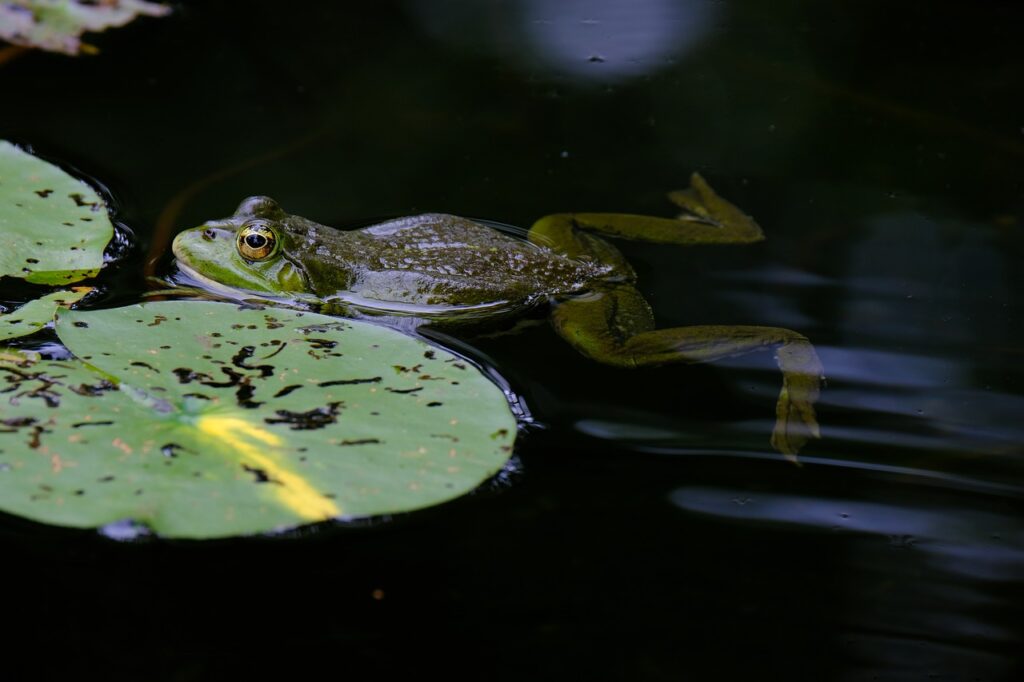
While many frog species can climb things and move along tree twigs, mostly using sticky pads on their toes, this is the only frog species with an opposable thumb that they use to grasp the twigs and stems they climb on.
Giant Pandas

The cuddly-looking animals don’t have a thumb or a finger that can be used as one. What they have is a false thumb formed from an enlarged carpal bone. This bone does enable the panda to grasp and hold bamboo stems and shoots, which they eat almost exclusively. These large animals live in the mountains of central China.
Giant pandas are related to bears, although they aren’t properly called panda bears as they used to be.
Another animal called a red panda is much smaller and looks much more like a slender raccoon. It is related to raccoons.
Virginia Opossums

These common animals may resemble large rats to some people, but they are anything but. They are the only marsupial in North America, carrying their young in a pouch like wallabies and kangaroos, and they have opposable thumbs on both front and hind paws.
Marsupial Possums
These Australian natives also have opposable thumbs on the front paws except for three species. The first toe on the hind feet, which don’t have a claw, also function somewhat as a thumb.
Animals with thumbless hands
Raccoons

Raccoons certainly have nimble fingers and hands. This is why people must resort to creative ways to keep raccoons out of their garbage cans in urban areas. Raccoons are often adept at opening various fastenings on any cages they are kept in.
They can also hold things between their front paws and walk a short distance on their hind legs, carrying what they hold. They also have sensitive pads on their hands, enabling them to find food in water by feeling rather than sight.
Beavers
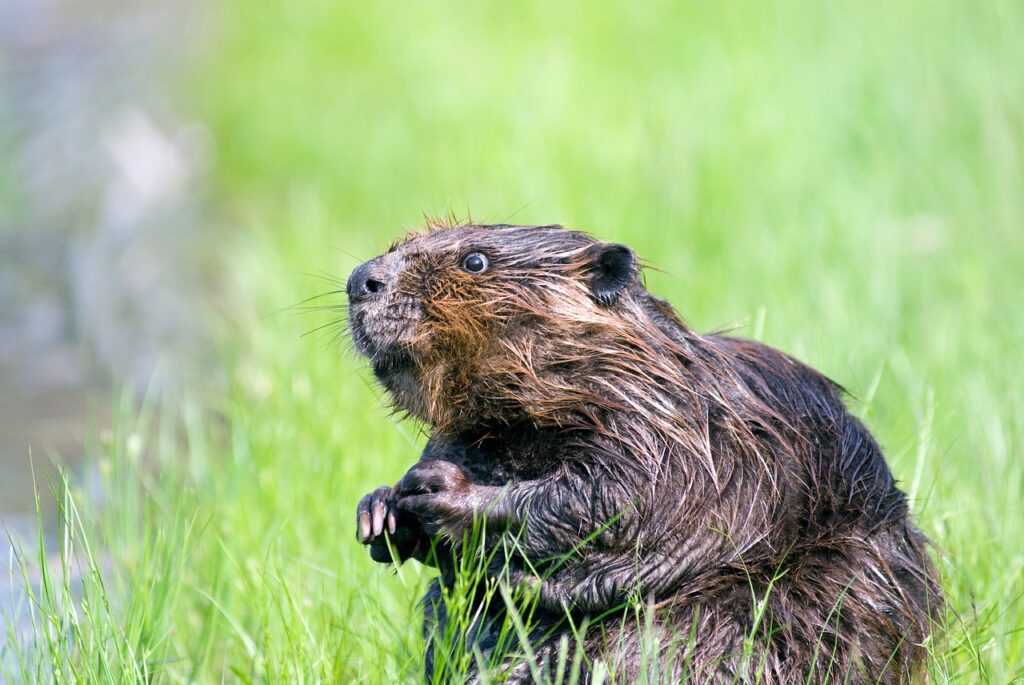
Beavers often use their hands to lift or move objects. This is necessary, as beavers build large homes that extend underwater out of limbs and other tree parts. They also build dams of limbs, rocks, and mud to form ponds for them to live in. They occasionally have to patch leaks as well. None of this would be possible if they didn’t have hands they could use.
Squirrels
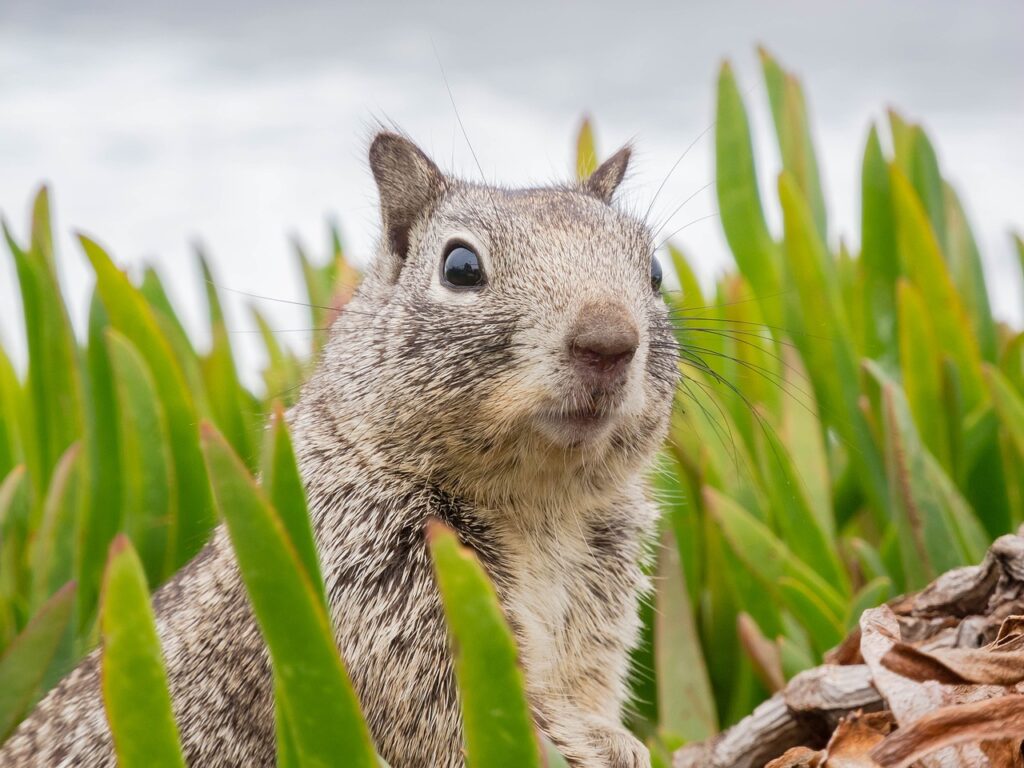
Many of us have seen a squirrel sitting up and holding a seed or other treat while nibbling on it. This ability to hold things comes in handy when the squirrel has a shell to break through to get to the good stuff. One little-known fact is that squirrels can be either left- or right-handed. People with pet squirrels can hand them twigs or toys and see which hand they usually use to grab or hold the item. This will indicate the dominant hand.
Many other animals use their paws for various things such as holding onto branches or combing their fur. Try observing animals in the wild around your home and watch for their use of their front paws. You may be surprised at what you find.

